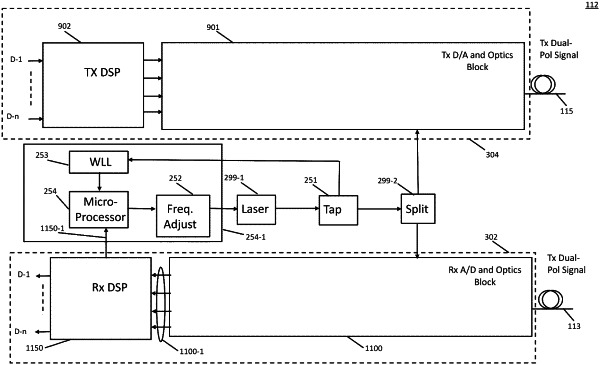| CPC H04B 10/503 (2013.01) [H04B 10/504 (2013.01); H04B 10/524 (2013.01); H04B 10/532 (2013.01); H04B 10/614 (2013.01); H04B 10/40 (2013.01)] | 26 Claims |

|
1. An apparatus, comprising:
a transmitter;
a receiver;
a laser operable to supply an optical signal;
a first splitter operable to provide a first portion of the optical signal and a second portion of the optical signal, the first portion of the optical signal being a local oscillator signal provided to the receiver and the second portion of the optical signal being provided to the transmitter, wherein the receiver includes:
a polarization beam splitter operable to receive a first modulated optical signal, the polarization beam splitter being a second splitter;
an optical hybrid circuit, the first splitter supplying the local oscillator signal to the optical hybrid circuit, the optical hybrid circuit being operable to provide a plurality of mixing products based on a first polarized output of the polarization beam splitter, a second polarized output of the second splitter, and the local oscillator signal,
a photodiode circuit operable to provide electrical signals based on the plurality of mixing products, and
a digital signal processor operable to output a data stream associated with the first modulated optical signal based on the electrical signals and provide a control signal based on the electrical signals, the control signal being indicative of a frequency associated with the first modulated optical signal; and
a control circuit that controls a frequency of the optical signal supplied by the laser based on the control signal, wherein the transmitter includes:
a modulator operable to receive the second portion of the optical signal supplied by the laser, the modulator being operable to modulate the second portion of the optical signal to provide a second modulated optical signal.
|